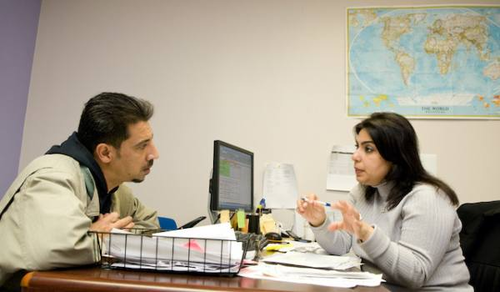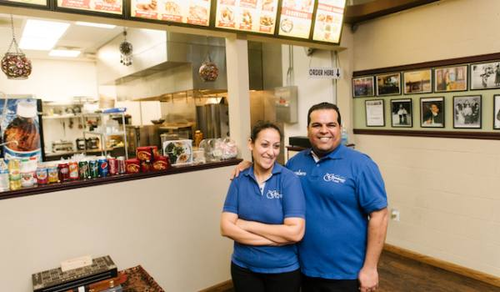The Role of U.S. Ties in Refugee Resettlement

What is a U.S Tie?
Refugees resettling to the United States can identify friends or relatives already living in the United States with whom they wish to be reunited upon arrival. Once identified, those individuals are contacted by a Resettlement Agency to confirm if they would like to have the refugees resettled nearby. If they agree, these individuals are considered U.S. ties. The Resettlement Agency will not share refugees’ personal details, such as medical information, with their U.S. tie. However, they will coordinate with the U.S. tie to prepare for the refugees’ arrival in the U.S.
U.S. ties are not financially nor legally responsible for their newly arriving refugee friends or relatives. However, they can play a helpful role in the refugee resettlement process by supporting the resettlement experience of their friends or relatives in collaboration with the Resettlement Agency. It is important to remember that the goal for refugees, with the assistance of the Resettlement Agency, is to achieve economic self-sufficiency through employment as soon as possible after their arrival in the United States.


What is a Resettlement Agency
A Resettlement Agency is a non-profit organization that cooperates with the United States Government in a public-private partnership to assist refugees who come to the United States through the USRAP. The United States Government sets guidelines and provides partial funding for the required core services that refugees receive through the Reception and Placement (R&P) program. Resettlement Agencies are responsible for delivering these services and provide critical support to refugees and their families during their first months in the United States. To learn more about the Resettlement Agency, visit the CORE Resettlement Navigator website at https://settleinus.org.

How Do U.S. Ties Collaborate with the Resettlement Agency?
The Resettlement Agency will contact the U.S. tie a second time closer to the arrival of their friends or relatives to explain the R&P program and required core services. This second contact could happen months or years after the first contact, and any changes
in U.S. tie contact information should be communicated to the Resettlement Agency, including if the U.S. tie changes their address.
When the Resettlement Agency contacts the U.S. tie closer to
the refugees’ arrival, they will ask the U.S. tie if they would like
to be involved in the resettlement services and support such as accompanying the Resettlement Agency in picking up their friends or relatives from the airport, providing housing or transportation to appointments, or orienting refugees to their new community. The Resettlement Agency is ultimately responsible for providing these services and for determining the use of the R&P funding for refugees. Any assistance provided by U.S. ties is voluntary. Some Resettlement Agencies may have a “U.S. Tie Agreement” which is a form where U.S. ties indicates the support they can provide to their friend or relative when they arrive to the United States. This form is not a legal document but is a tool to help U.S. ties and agency staff.
Benefits and Considerations for U.S. Ties and Refugees
Refugees can benefit from the additional support provided by their U.S. ties in many ways. U.S. ties are in a unique position to share their own personal experiences about life in the United States with their newly arriving refugee friends or relatives as they navigate new and unfamiliar systems, as well as cultural differences. It is also important to recognize that each refugee’s experience in the United States is different and can be influenced by factors such as age, resettlement location, as well as work and language skills.
Language and Interpretation
Although U.S. ties may speak both English and the refugees’ language, Resettlement Agency staff cannot use U.S. ties as interpreters when communicating with refugees. The federal government requires the Resettlement Agency to engage an independent interpreter if no one on their staff speaks the refugee’s language. In some situations where the Resettlement Agency is not providing a required core service, U.S. ties may interpret for their newly arrived friend or family member. The agency can provide guidance regarding interpretation as necessary. U.S. ties are encouraged to emphasize the importance of learning English and participating in English learning training in their community.
Did You Know?
Below are facts about refugee resettlement to the United States most relevant for refugees with U.S. ties. To learn more about the USRAP and life in the United States, visit the CORE Resettlement Navigator website at corenav.org. This website provides clear, accurate, and up-to-date information for refugees and those who assist with their resettlement to the United States.
The guidelines set by the United States Government for the USRAP can change every year and as a result impact the services and assistance provided by Resettlement Agencies to refugees. Thus, the core resettlement services received by former refugees, who may later be U.S. ties, can be different from the services provided to newly arriving refugees.
The Resettlement Agency must document completion of required core services which includes confirming any services that U.S. ties provide. This is why U.S. ties may be asked to sign a document regarding the services they provide. However, U.S. ties are not obligated to provide any of the required core services.
Often, U.S. ties are happy to be involved in helping with the resettlement of
their newly arriving refugee friends
and relatives, whether it’s having them live in their homes, taking them to appointments, or simply providing emotional and social support. If U.S. ties are reporting their volunteer hours to the Resettlement Agency, they should confirm with Resettlement Agency staff to see what activities may be counted as volunteer support.
